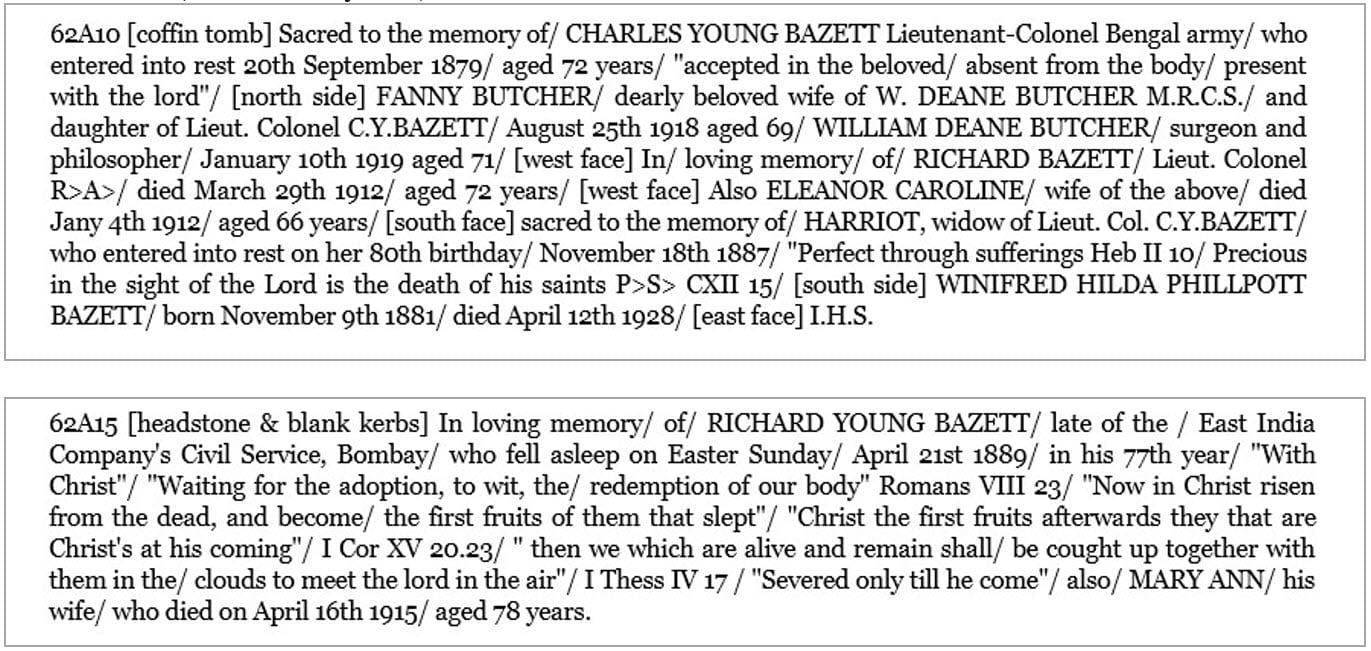In July 2018, the BBC aired an episode in that year’s series of the popular family history programme – Who Do You Think You Are? The subject being actress Olivia Colman. She also talked about the episode in that week’s Radio Times. She had been told that there was a French lady in the family (which was later proved to be true), but the episode really concentrated on one couple in particular, her 3x great grandparents, Charles and Harriot Bazett.
One of the key moments in the programme was when Harriot’s birthplace was revealed, thanks to an entry in the 1871 census, which showed that Harriot was born in Kishanganj in northeastern India. Olivia flew out to India and visited various places and learned much about her ancestor, before returning to the UK, to find out more.
But for family historians based on Reading Central Library’s second floor, the key point was where Harriot and her husband had been living at the time of the 1871 census – Reading.
Needless to say, the trip to India was a worthwhile one, both in terms of Olivia’s family history, but also in the story it told, in particular the tender moment when Charles and Harriot revealed their feelings for one another. This moment, likened to something from a Jane Austen novel by Olivia, was written in a letter by Charles to his brother Richard, with whom it would appear he was close.
However, what happened to the couple on their return to England wasn’t covered by the programme, and thanks to research using the resources available through both Reading Library and the Berkshire Family History Society, their story can be completed here.
So, the 1871 census, as used in the programme, didn’t show the couple’s address, but a quick check of the full entry showed that they were living at a house called Springfield, on the Bath Road, along with three servants.
Springfield no longer exists, but it is possible to locate it on old maps, the 1879 OS map at 1:500 scale shows that it was quite a sizeable house, and lay almost opposite to one of the entrances to Downshire Square. Further exploration of the census returns show the couple there in 1861 too, along with their young daughter, Fanny, then aged 11. Charles’s occupation is described as Lieut. Col, retired East India Service; he was 53, as was Harriot. They also had three visitors staying with them – Kate and Gertrude Lamb, and Eliza Brown, plus four servants – a lady’s maid, cook, parlour maid and house maid.
Using the street directories, it can be seen that the family had been there since at least 1859, but confirmation comes that they had been there even before that, in the obituary notice for Charles. This appears in the Reading Observer of 27th September 1879, which starts:
‘It is our painful duty to record the death of one, who for many years, occupied a prominent position in this town, and was universally respected. Colonel Bazett, although not a native of Reading, had spent 23 years of his active life among us, and his death will be lamented by a wide circle of friends.’
It goes on to say that he had been in poor health for a little while, but his death hadn’t been expected until a few days before. He left a widow and three children, his son who had joined the Royal Artillery, had made it home from India in time to see his father.
His eldest daughter, who had married and lived in North Devon, was also present, and his youngest daughter, Fanny, had married W.D. Butcher, who was a doctor in the town, and had attended his father-in-law in his illness.
The article goes on to discuss the associations that Lt. Col. Bazett had been involved with, and also the funeral arrangements.
Thanks to the work of the Berks FHS in transcribing parish records, we know the details of the burial of both Charles Bazett and his wife, and not only that, there is also a fiche and CD covering the memorial inscriptions of the graves at Cemetery Junction, where they were both buried.
Charles died in 1879, and Harriot followed in 1887, dying on her 87th birthday. Theirs is a coffin tomb (usually a raised, rectangular shape, with a top), and it includes not only the couple, but their daughter, Fanny, her husband, and three other family members too. Nearby is another gravestone, this time to Richard Young Bazett – Charles’ younger brother, and his wife, Mary Ann.
It would appear that both couples, Charles and Harriot, and Richard and Mary Ann, settled in the town around the same time, and after the gentlemen had retired from military service. They joined, or were joined by, a third brother, Alfred, who as a clerk in Holy Orders, moved round the country when requested by the church.
Whilst in the town, Alfred and his family resided at Victoria Square, and at the time of his death, Richard was living at Highfield, on the Bath Road (although he had had other addresses previously in the town).aa

